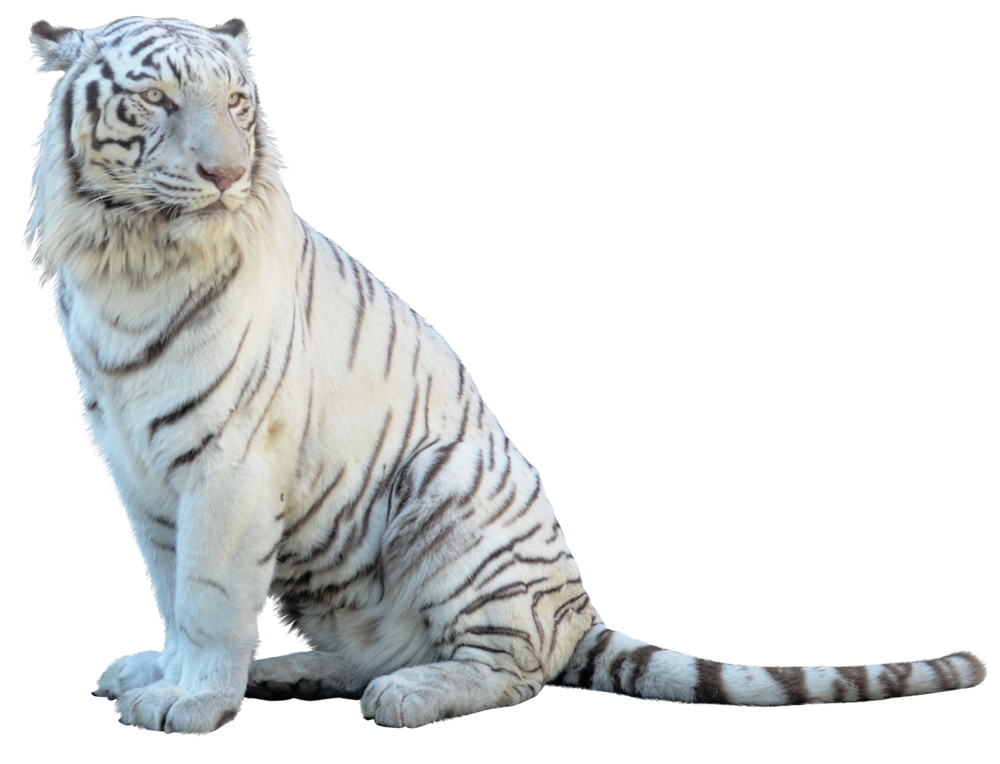
Panthera tigris tigris var.
動物ショーの行く末は
What is the future of animal shows?
ホワイトタイガーはベンガルトラの白変種であり、先天的にメラニン色素を欠いたアルビノとは異なり、オレンジ色の毛皮に含まれる色素フェオメラニンが不足しているために生じたものです。一般的に通常のベンガルトラよりも成長が早く、大きくなる傾向があり、2~3歳で完全に成長します。オスは、体重が200 – 230kgに達し、体長は3mまで成長することがあります。
白いベンガルトラが生まれるには、両親が白色の珍しい遺伝子を持っている必要があり、野生下では1万分の1の確率と言われています。1958年に、インドで発見されたホワイトタイガーを最後に野生の個体は確認されていません。現在動物園では世界で約250頭、日本で約35頭のホワイトタイガーが飼育されていますが、そのほとんどが繁殖された個体です。
ホワイトタイガーは希少で神秘的な姿からエンタテーメントやサーカスでも人気の存在となりました。1990年代のショービジネスの世界でホワイトタイガーを使い、一躍有名になったのが魔術師ジークフリート&ロイです。彼らは継続的にホワイトタイガーをショーに出演させるためにインド政府の協力を得て繁殖に取り組みました。幾多の失敗を繰り返し、最終的にはアメリカのナッシュビル動物園の協力により繁殖に成功しています。しかし、彼らに運命の転機が訪れます。2003年に行われたショーの途中でコンビの一人ホーン・ロイはホワイトタイガーに首を噛みつかれ重傷を負ったのです。ホーンは病院に運ばれる途中で危害を加えたトラを決して傷つけないように懇願しました。運動能力と言語能力を恒久的に失った彼はショービジネスの世界から引退を余儀なくされます。ホーンはその後、長いリハビリテーションを経て再び歩けるようになり、コンビは2009年、チャリティ目的で最後の公演を行いました。その公演にはホーンに重傷を負わせたホワイトタイガーも出演したとマネージャーは報道陣に語りましたが…。
現在、サーカスやエンターテイメントの世界では、動物ショーを禁止する流れがあります。人間の見世物になるために調教や長距離の移動を強いられ、大きな苦痛を受けているからです。動物が受けている苦痛を最小限に抑える配慮しようという考えは「動物福祉(Animal welfare)」と言われています。その概念は世界中で広がりつつあり、動物園や水族館の在り方も変化が求められています。
White tigers are a white variant of the Bengal tiger. Unlike albinos, which are born without melanin, white tigers are born without pheomelanin, a pigment found in orange fur. They generally grow faster and larger than normal Bengal tigers, reaching full maturity at 2-3 years of age. Males can reach a weight of 200-230kg and a length of up to 3m.
For a white Bengal tiger to be born, both parents must have the rare white gene, and it is said that the probability of this happening in the wild is one in 10,000. The last white tiger discovered in India in 1958 has not been seen in the wild. Currently, there are about 250 white tigers in zoos around the world and about 35 in Japan, but most of them are bred.
White tigers have become popular in entertainment and circuses due to their rare and mysterious appearance. In the 1990s, the magicians Siegfried and Roy became famous by using white tigers in the world of show business. They worked on breeding white tigers with the cooperation of the Indian government so that they could continue to perform in shows. After many failures, they finally succeeded in breeding with the cooperation of the Nashville Zoo in the United States. However, a turning point in their fate came. During a show in 2003, one of the duo, Horn Roy, was seriously injured when the white tiger bit him on the neck. While being taken to the hospital, Horn pleaded with them not to hurt the tiger that had harmed him. Having permanently lost his motor and speech skills, he was forced to retire from the world of show business. After a long rehabilitation, Horn was able to walk again, and the duo performed their last show for charity in 2009. The manager told reporters that the white tiger that had seriously injured Horn also appeared in that show…
Currently, there is a trend to ban animal shows in the circus and entertainment world. This is because animals are forced to undergo training and travel long distances to be a spectacle for humans, which causes them great pain. The idea of minimizing the suffering of animals is called “animal welfare.” This concept is spreading around the world, and changes are being called for in zoos and aquariums.
参考文献
“White Bengal Tiger”. Animal Corner. Archived from the original on 1 April 2008. 2025年6月21日閲覧
ホワイトタイガー | 野生の王国 群馬サファリパーク 2025年6月21日閲覧
Sankhala, K. (1997). Tiger! The Story Of The Indian Tiger. Simon and Schuster. ISBN978-0-00-216124-4.
The Tiger and the Tragic Trick: Siegfried & Roy’s Animal Handler Breaks Silence on Mauling, Alleges Cover-Up 2025年6月21日閲覧
石川 創『動物福祉とは何か』日本野生動物医学会誌, 2010, 15 巻, 1 号, p. 1-3, 公開日 2018/05/04, Online ISSN 2185-744X, Print ISSN 1342-6133 2024年8月12日閲覧